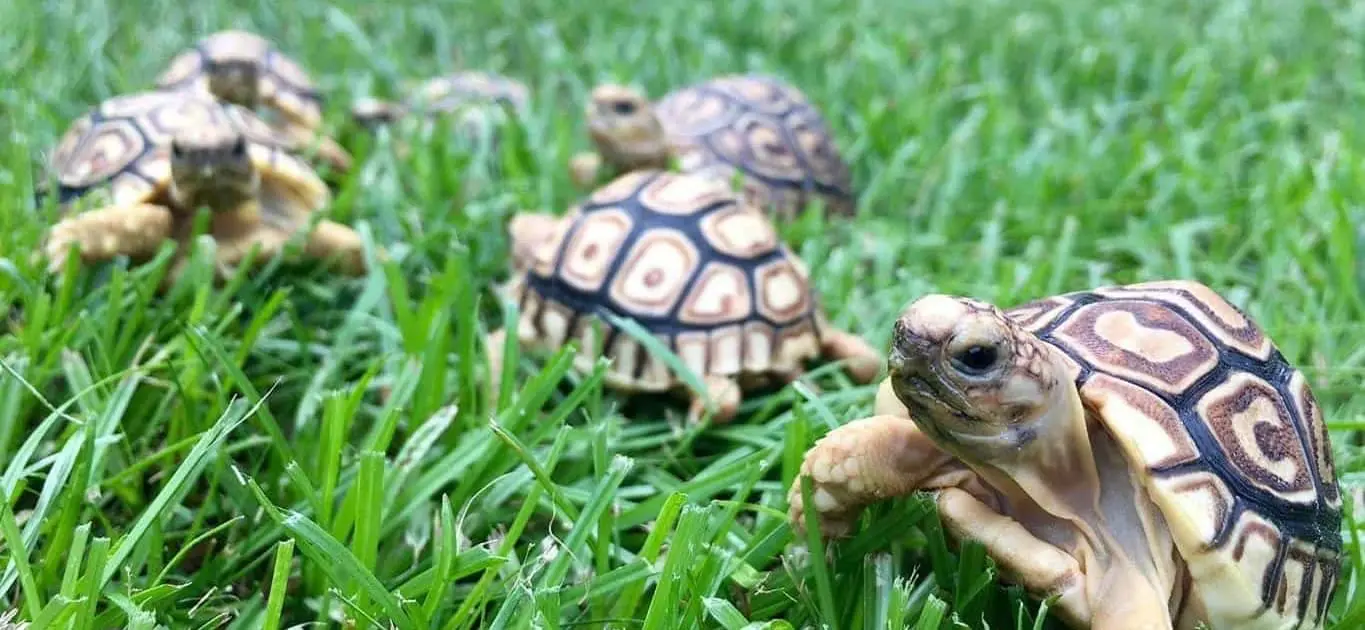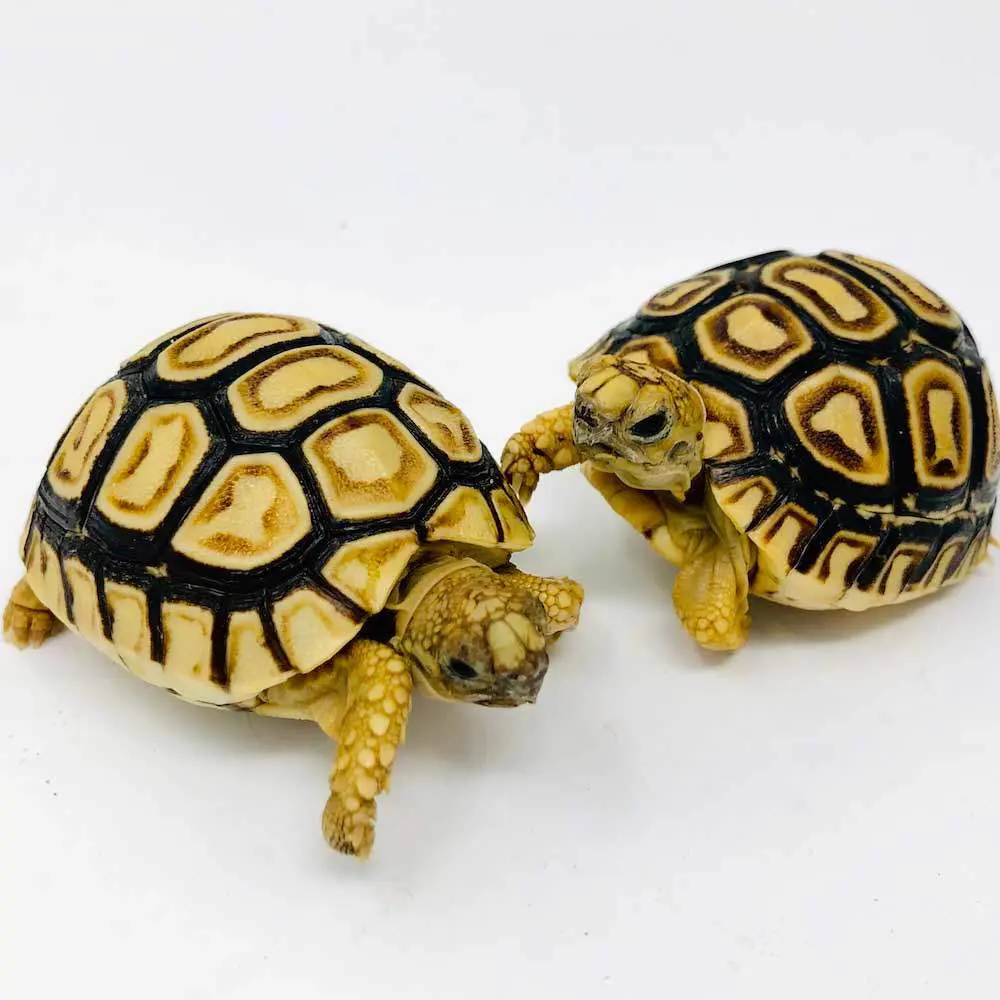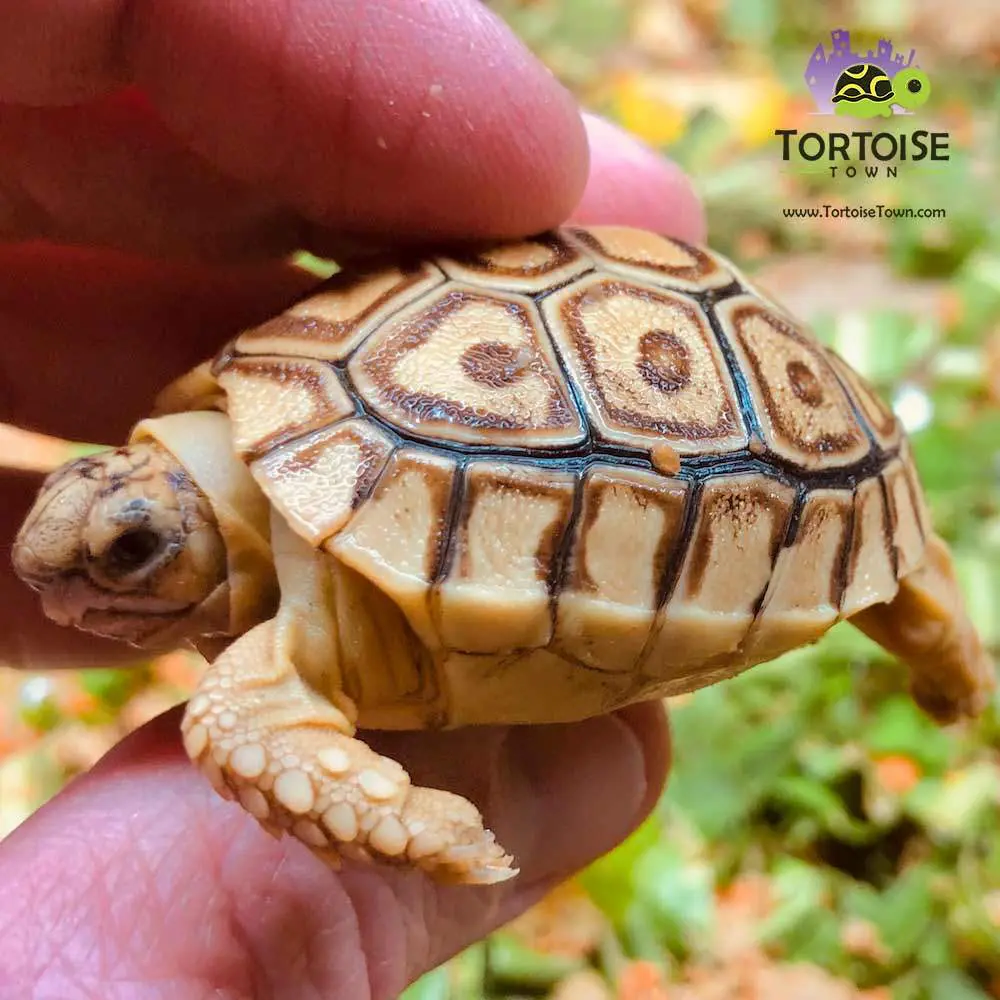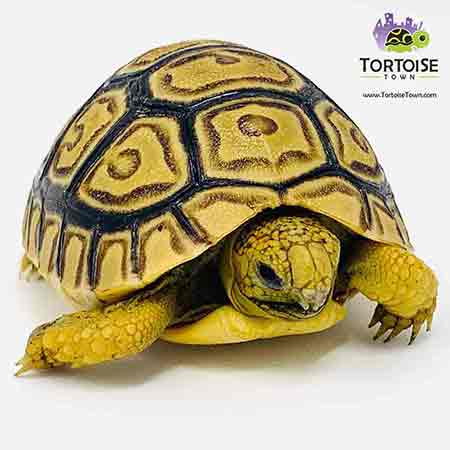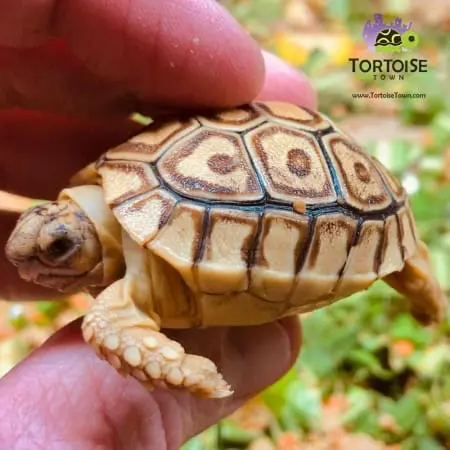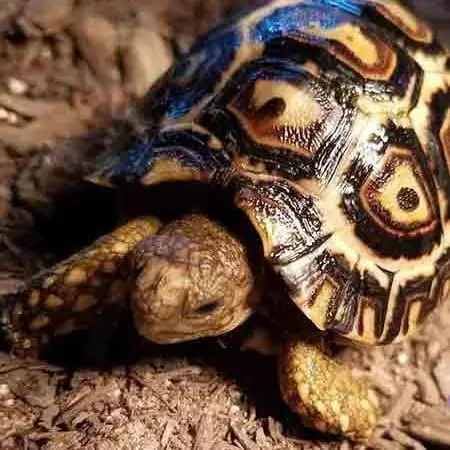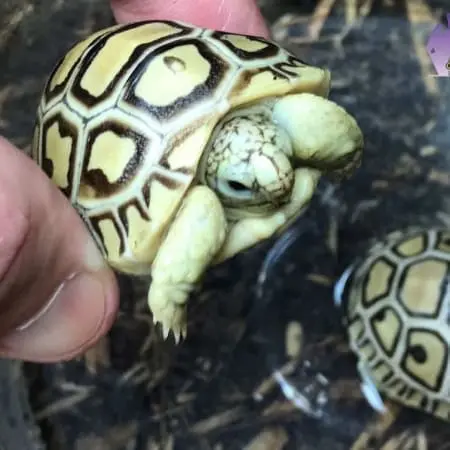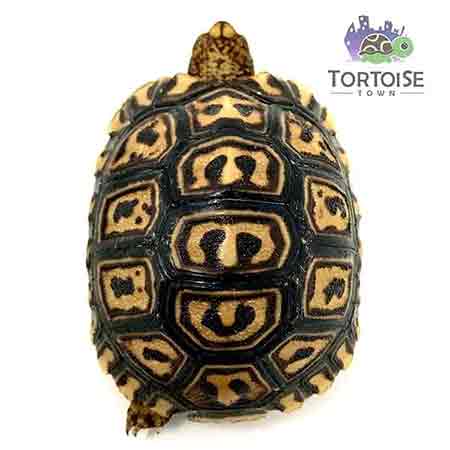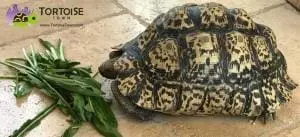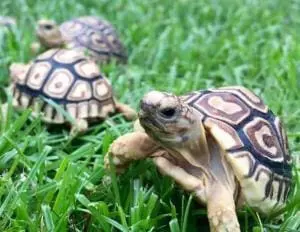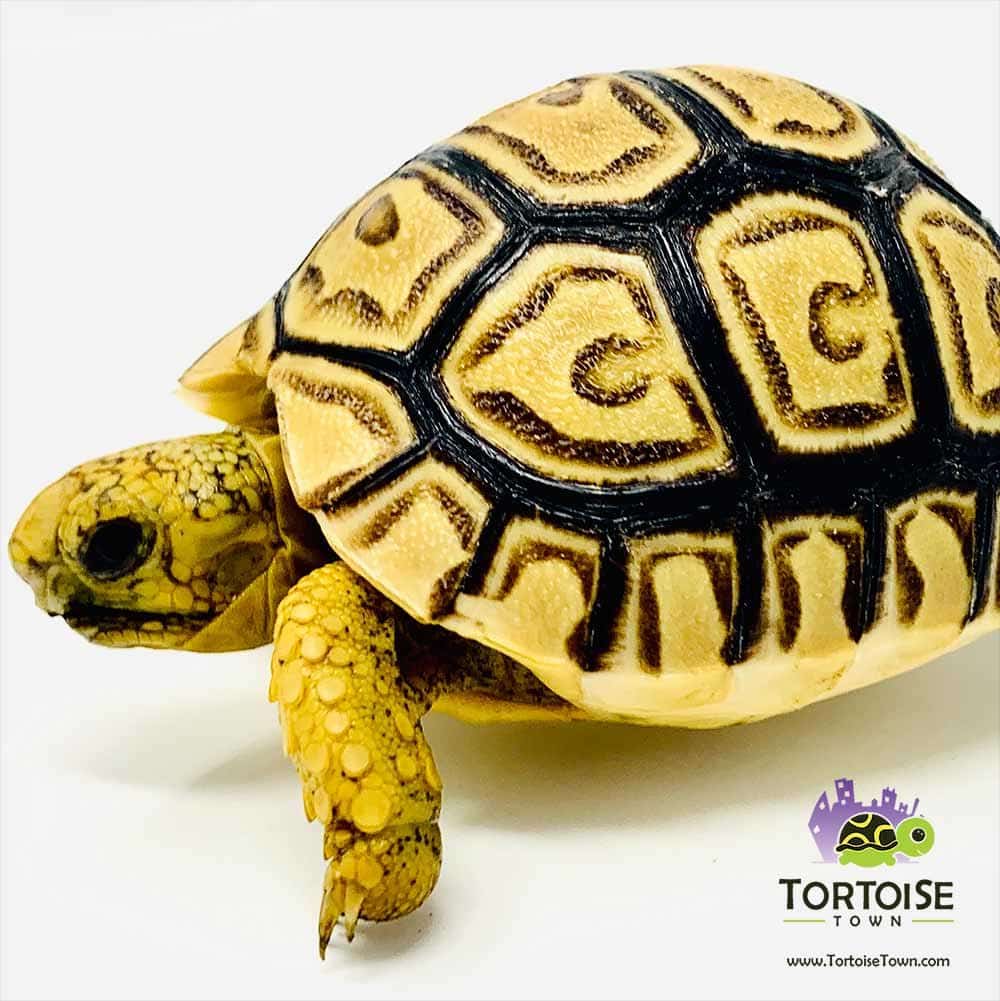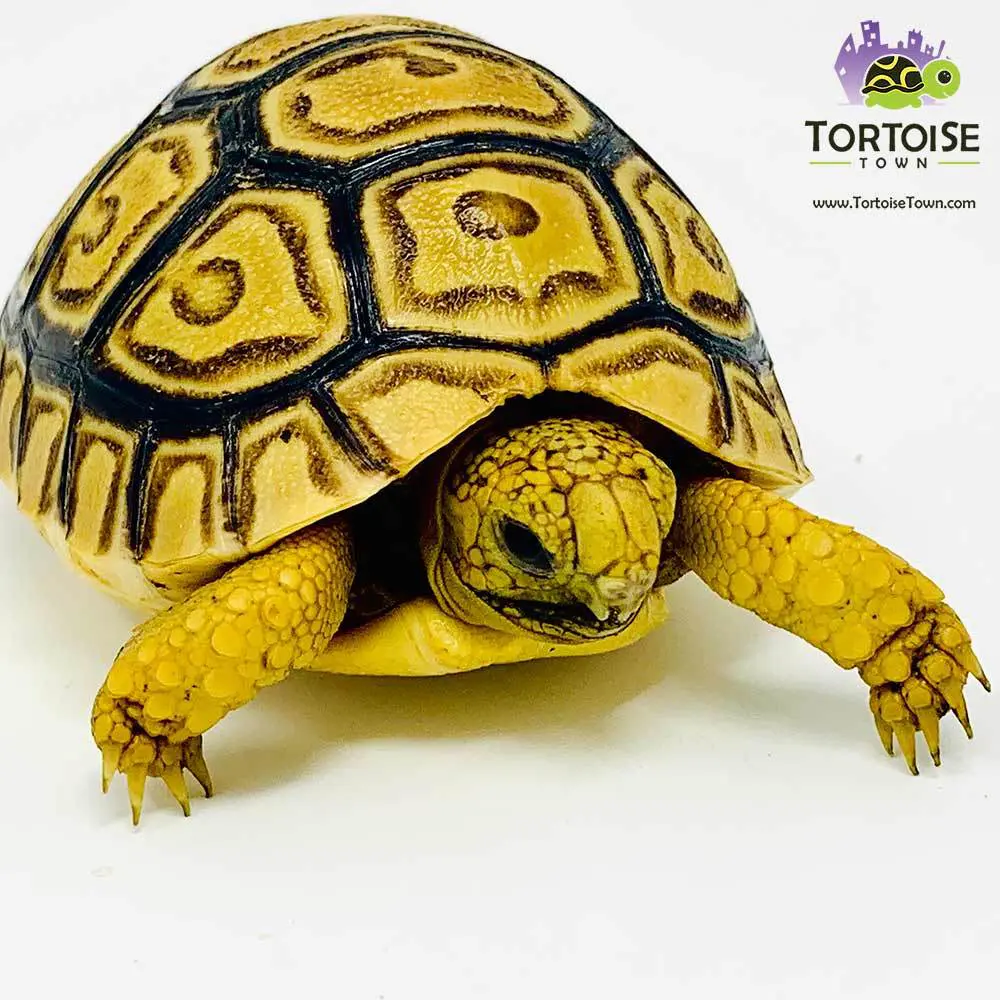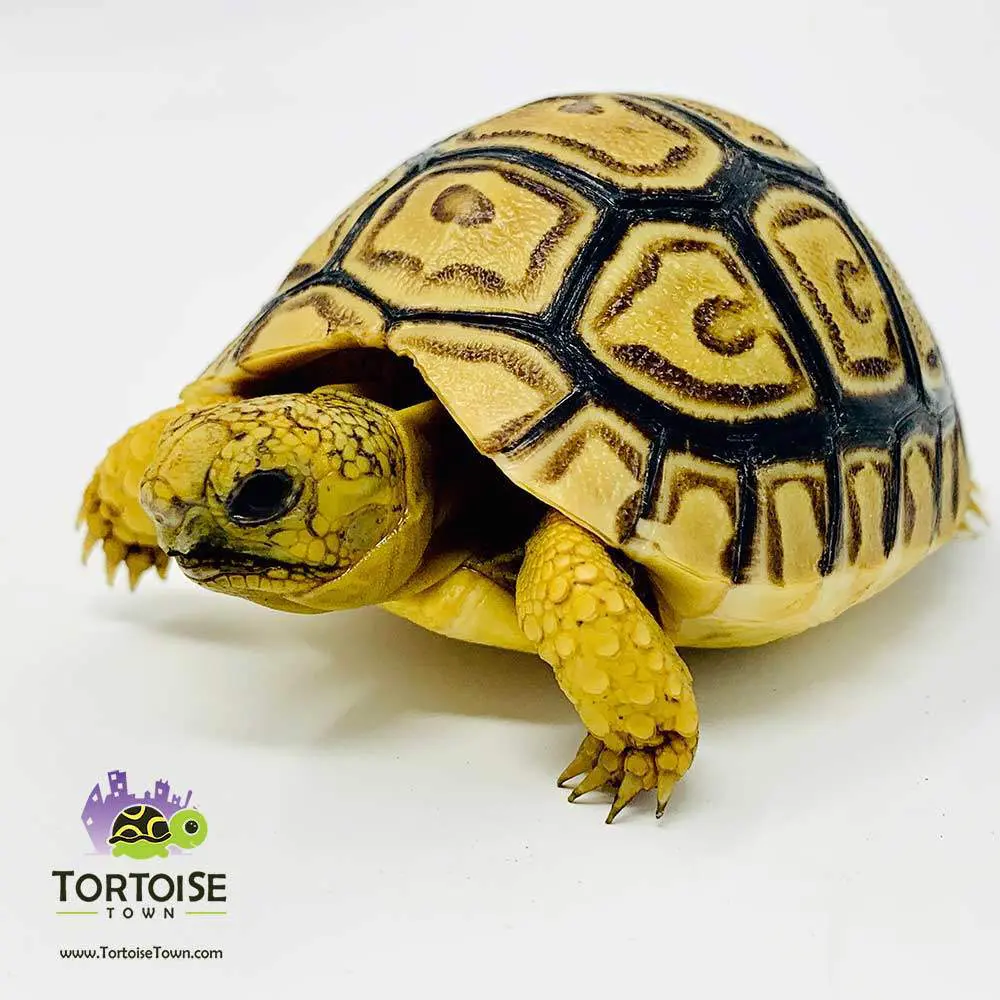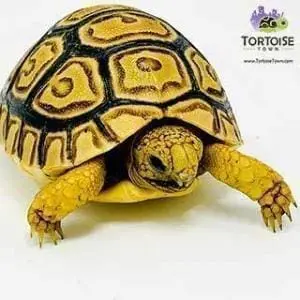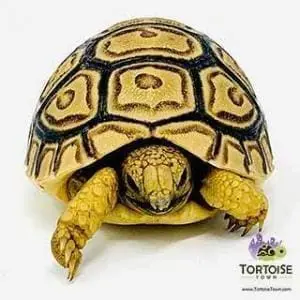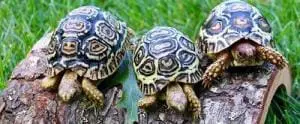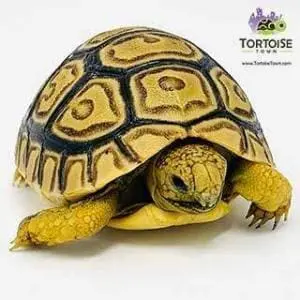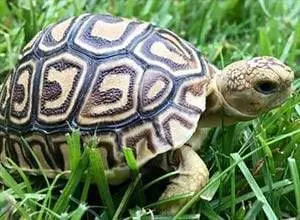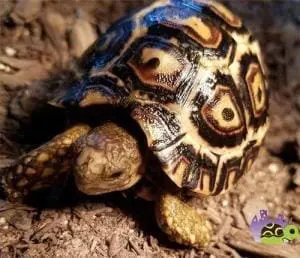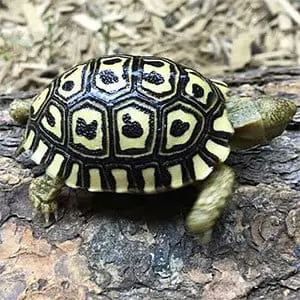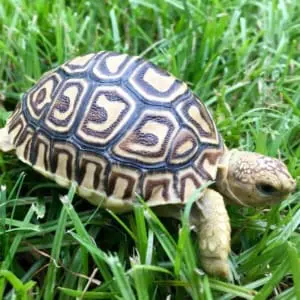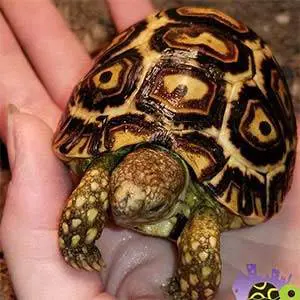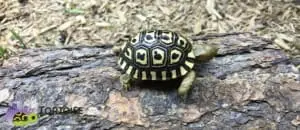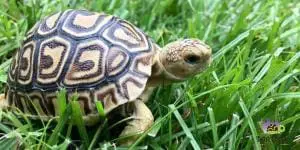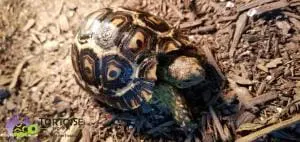leopard tortoise care guide

leopard tortoise size
Adult leopards grow from 9 to 18 inches long (most grow 9-12″ at full maturity) depending on where the tortoise comes from (what geographic subspecies it is from). The Giant South African subspecies, Stigmachelys pardalis pardalis, can grow up to 24 inches, however, most reach around 14-18″, and the leopard giants from Ethiopia and Somalia can grow up to 30 inches.
Consider that most of the time you will find the females outgrowing the males, however depending on the geographic origin of the leopard tortoise baby this may be reversed, or male and females may be of similar size.
Remember that male leopards will have a concave plastron, and a longer tale, where females would have a much shorter tail and convex plastron.

leopard tortoise lifespan
Leopards live between 50 and 100 years in the wild.

Leopard Tortoise Habitat and Cage setup
A Leopard does very well whether they are living indoors or outdoors. Inside, consider building or purchasing a tortoise table style enclosure. Alternatively, provide an outside tortoise habitat in areas where the temperature does not dip below 55 degrees at any time.
Secondly, a pair of adult leopard tortoises for sale can be kept in a 4 foot by 8-foot setup or tortoise table. Lastly, it is important that the walls are a solid material so the tortoise cannot see thru them.
Because of this and for that reason, aquariums are normally not recommended. Basically, do not use them unless the walls can be covered so the animals cannot see through them. Also, you should make sure the tortoise table walls are at least 16-18″ tall and can be made of wood, block or other material that prevents the baby leopard tortoise from seeing out. In closing, leopards are very calm and do not try to dig, or escape like some other breeds of tortoise may do.

The correct leopard tortoise habitat is key
After reading your leopard tortoise care sheet, be sure to provide plenty of hiding places, a hide box and if outdoors plenty of shrubbery to provide cover for the leopard torts. Planting things like grass that is edible in some portion of the outdoor enclosure is preferred.
Provide some uncovered soil areas if your tortoises are old enough to lay eggs, etc. Some rolling terrain is recommended. You will often find your leopard basking in the sun at the highest point of its terrain.

Adult leopard torts can be housed indoors in a stock tank, plastic pool or large tub. Although a pair of adult leopard tortoises could be maintained in an enclosure measuring 8×4 and 1.5 feet tall, larger areas allow more time between cleaning and changing substrates. Keep in mind they will not be an adult size for over a decade.
We recommend a variety of coconut husk, and forest floor as an enclosure substrate, but regular potting soil may also be used. It is important to also offer different micro-climates where the temperature varies like moist hide boxes as well as basking spots and heated areas using a heat lamp or ceramic heating element.
Leopard Tortoise Temperature and Lighting
One of the best things about having a pet Leopard is it does not hibernate. Leopards generally live in areas that are between 70-100 degrees F in their natural habitat.
For indoor tortoise table or enclosure of the leopard tortoise, temperatures should be kept between 75 and 90 degrees. Lastly, provide them with a basking spot of UVB light and heat of 95 degrees.
Both natural sunlight or UVB light plays an important role in how the body grows and absorbs and uses calcium. UVB light or natural sunlight allows the tortoise to produce vitamin D3. Vitamin D3 is crucial for the tortoise to absorb and use the available calcium.
Lastly, UVB can be achieved by using fluorescent tubes specially made for reptile use. If fluorescent tubes are used for UVB, a separate light or heating element, normally ceramic, may be required for heat.
If housed in an outside or outdoor enclosures for leopard tortoise hatchlings may handle a wider range of temperatures. Similarly, once temperatures drop into the 50s at night or daily high temperatures fail to exceed 70 degrees, move tortoises indoors or provide heat. Lastly, heat may be provided with items such as ceramic heat emitters, infrared heat lights, etc.
Leopard Tortoises (importance of Feeding your leopard tort the right Food)
Leopards are grazers and feed on a variety of weeds and greens. The leopard tortoises diet should be rich in calcium and fiber. In addition to grazing, the captive diet may be supplemented a couple times a week with greens.
Most noteworthy, these include: collard greens, turnip greens, mustard greens, dandelion greens and flowers, hibiscus leaves and flowers, grape leaves, escarole, mulberry tree leaves, spineless cactus pads (Opuntia spp.), carrots, zucchini, butternut squash, pumpkin, mushrooms, sweet potato, yellow squash, and bell peppers. Soaked Tortoise food may also be included in their daily dietary needs.
Although some tortoise keepers supplement the diet with manufactured vitamins and vitamin D3, I have not found these necessary if the leopard tortoises are provided with a varied diet and exposed to UVB light. Hatchlings should be fed daily and may benefit from food that is lightly sprinkled with calcium powder several times a week.
Leopard Tortoise Care Sheet – Leopard Tortoise Water
Leopard tortoises readily drink standing water. A shallow water area may be provided, checked on daily and cleaned as required. The size of the water dish should be large enough so the tortoise can get in and out easily and only deep enough to drink. Hatchlings may be soaked one, two or three times a week in shallow, warm water. Remember, hatchling tortoises for sale drink often and sometimes defecate in the water. Because of this, change the water daily.
Handling a leopard tort and leopard tortoises Temperament
Leopard tortoises are shy and will withdraw their head and limbs until they are used to their home/habitat. Over time, however, they generally learn to recognize their keepers and will come for food and if handled in the correct manner will become great pets.
If you’re considering where to buy leopard tort, choose tortoise town for the nicest baby leopard tortoise for sale anywhere. Lastly, if you mistakenly ended up here but were searching for leopard geckos, or a leopard gecko, visit our gecko store over at CB Reptile. If you are looking for a real live freshwater turtle, we recommend our turtles for sale section or turtle store.
Check out all the other leopard tortoise care sections of our website, written by our biologist.

